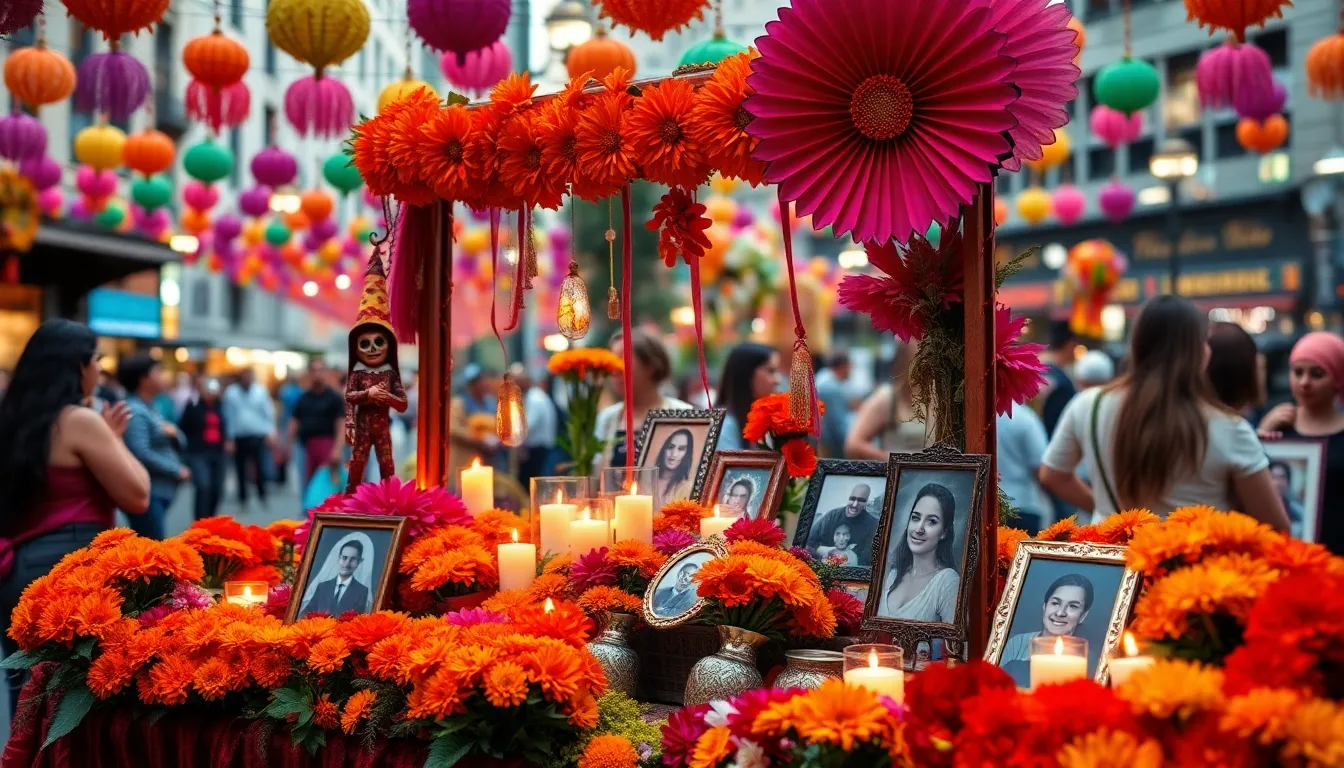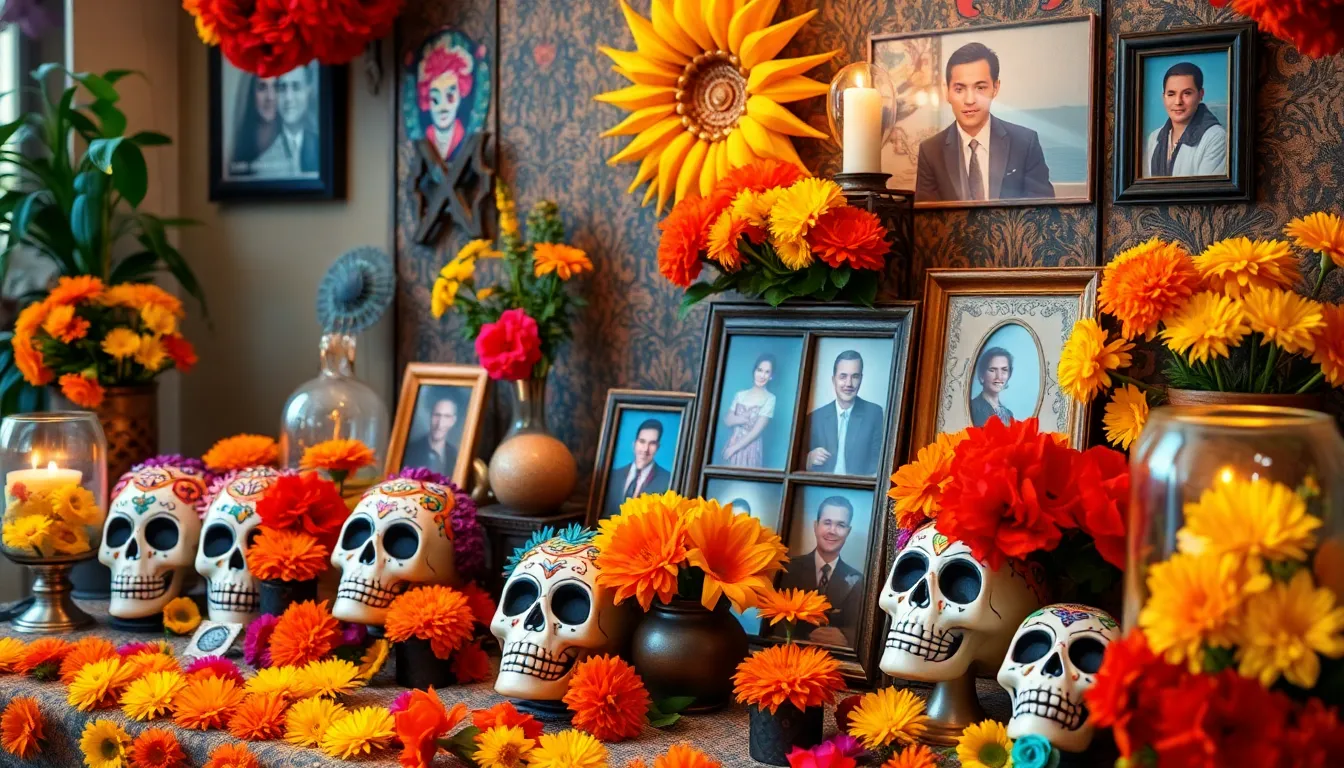Table of Contents
ToggleAs the vibrant colors of autumn begin to fade, a unique celebration approaches that brings life to the afterlife—Día de Muertos. This enchanting holiday, celebrated primarily in Mexico, invites families to honor their departed loved ones with joy, laughter, and a dash of mischief. With the countdown to this festive occasion underway, it’s time to dust off those sugar skulls and prepare for a fiesta that’ll tickle your funny bone while honoring the dearly departed.
Overview of Día de Muertos Cuenta Regresiva
Día de Muertos, or Day of the Dead, features a countdown known as “cuenta regresiva,” marking the days leading up to the celebration. Celebrated annually from October 31 to November 2, this period allows families to prepare for honoring their loved ones. Each day serves a specific purpose and builds anticipation for the festivities.
On October 31, families begin preparations. They set up altars called “ofrendas,” showcasing photos, personal items, and favorite foods of the deceased. November 1 is dedicated to infants and children, known as “Día de los Inocentes.” Families often create special altars and offer sweet treats to commemorate these young souls.
The main celebration occurs on November 2, when families gather to honor all the departed. Festivities include lively gatherings and colorful parades, reinforcing a sense of community. Music, dance, and storytelling play crucial roles, helping to keep memories alive and bridging the gap between the living and the departed.
In preparation for the event, the countdown generates excitement. Activities increase as participants engage in decorating, selecting offerings, and creating traditional sugar skulls. Shops brim with vibrant decorations, candles, and marigold flowers, essential for setting the atmosphere.
Día de Muertos cuenta regresiva emphasizes unity and remembrance. Communities come together to share stories, laughter, and even tears, fostering a deeper connection with their heritage. Each element, from the ofrendas to the festivities, creates a beautiful tapestry of remembrance, ensuring that the spirits of the departed remain an integral part of the celebration.
Cultural Significance


Día de Muertos holds deep cultural significance, embodying the rich traditions and beliefs surrounding death and remembrance in Mexican society. Families come together to honor their ancestors and celebrate life.
Historical Background
This celebration traces its roots back to ancient Indigenous civilizations like the Aztecs, who revered death as part of the cyclical nature of life. Rituals evolved over centuries, merging Indigenous traditions with Catholic influences following Spanish colonization. Altars, known as ofrendas, became central elements, reflecting diverse offerings that show love and respect for the deceased. Festivals developed around these traditions, creating a vibrant structure that includes the use of symbolic items such as marigolds to guide spirits.
Modern Celebrations
Today, individuals across various regions embrace Día de Muertos with community festivals, parades, and artistic expressions. Families create intricate ofrendas decorated with photographs, food, and flowers, welcoming spirits back to their homes. In urban areas, large celebrations include music, dance, and artistic displays that showcase local culture. Schools often create educational programs, teaching children about the significance of this holiday. Social media also plays a role, allowing communities worldwide to share their festivities, enhancing awareness and appreciation for this unique celebration.
Key Traditions
Día de Muertos features several key traditions that celebrate life and honor the deceased. These practices include vibrant altars, sugar skulls, and marigolds, each holding significant meaning within the celebration.
Altars and Offerings
Altars, or ofrendas, serve as the heart of Día de Muertos celebrations. Families create these installations at home to welcome the spirits of their loved ones. Each altar typically includes photographs, favorite foods, and personal items of the departed, ensuring that their essence remains present during the festivities. Candles and incense are included to illuminate the way for the souls. In addition, papel picado, colorful paper cuttings, adorns the altars, symbolizing the fragility of life. This personal touch reflects each family’s unique memories and connection to their ancestors.
Sugar Skulls and Marigolds
Sugar skulls, or calaveras, play a pivotal role in the celebration. These decorative treats symbolize the sweetness of life and the joy in remembering those who have passed. Families often customize the skulls with names, making them personal tributes. Marigolds, known as cempasúchil, also hold significant importance. Their bright orange color is believed to guide spirits back to the living world. These flowers are commonly used to decorate altars and graves, creating a vibrant display that signifies life, death, and the connection between both realms. Together, sugar skulls and marigolds embody the joyful spirit of Día de Muertos.
Countdown to the Celebration
The countdown to Día de Muertos builds excitement as families prepare to honor their loved ones. Each day holds special significance, enhancing the overall celebration experience.
Important Dates
From October 31 to November 2, three important dates emerge in the calendar. October 31 marks the preparation day, when families set up ofrendas. November 1 is dedicated to honoring departed children and infants, referred to as “Día de los Inocentes.” Families light candles and place toys on altars to welcome these young spirits. Finally, November 2 is a day for everyone to remember deceased loved ones, involving gatherings at cemeteries and community events.
Preparations and Activities
Preparations begin early with families creating vibrant decorations. Sugar skulls become popular craft items; they are often painted in bright colors to celebrate life. Additionally, marigold flowers fill homes, inviting spirits back with their vivid hues and distinct scent. Altars, or ofrendas, come to life with photographs, favorite foods, and personal items that reflect the deceased’s essence. Festivities intensify with community parades, where music, dancing, and storytelling foster a sense of unity. Each preparation activity reinforces the spirit of remembrance and celebration leading up to Día de Muertos.







